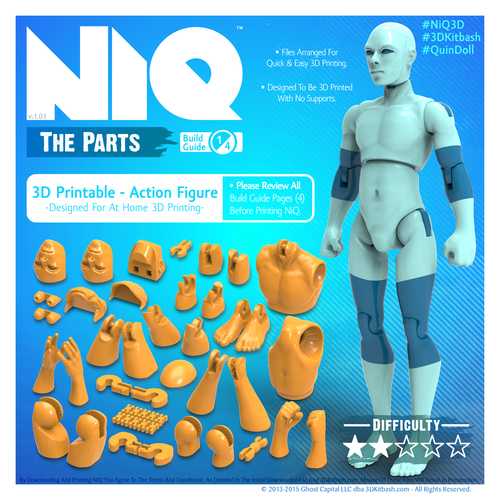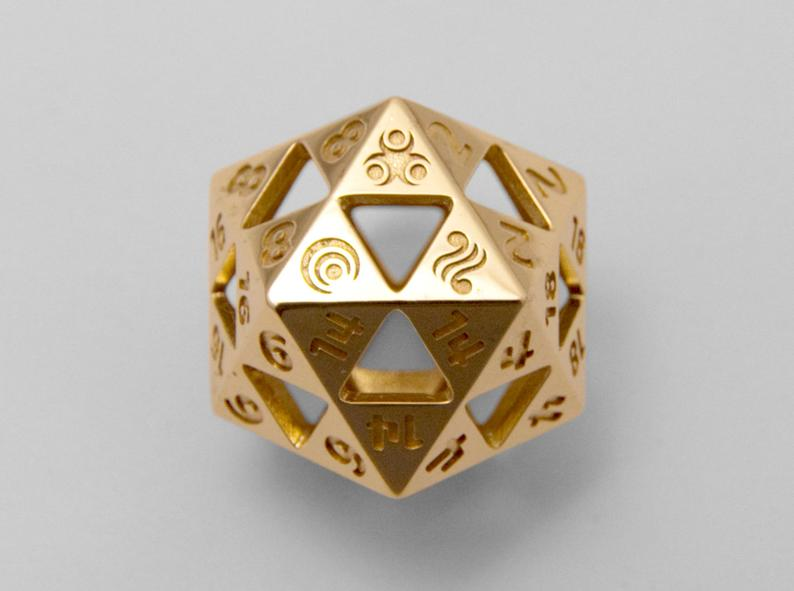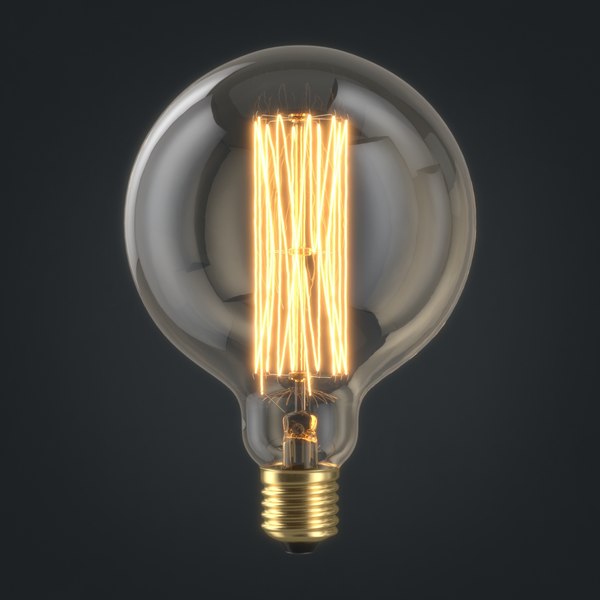3D printer with filter
Nevermore Is What You Get When Engineers Design Air Filters For 3D Printers
- by: Donald Papp
What happens when an air filter for 3D printers gets designed by engineers with a passion for function, a refusal to compromise, and a desire to do without bad smells or fumes? You get the Nevermore, a design for a recirculating active-carbon filtration system to deal with VOCs (volatile organic compounds) from 3D printing.
3D-printable parts and an easy-to-fill chamber for bulk-activated carbon make this recirculating air filter for VOCs a smart, space-saving design.The Nevermore Micro (and larger Nevermore Max) were originally intended to complement the Voron 3D printer design, but are made such that they can be used with just about anything else. These filters use 3D-printable parts, and are designed to be easily filled (and refilled) using bulk-activated carbon instead of some kind of proprietary pre-packed filter like most commercial offerings. The Voron project is all about a printer without compromises, and the Nevermore comes from that same design ethos.
A Nevermore filter sits inside the build chamber, and works by recirculating air inside while passing it through the activated carbon. The idea is that by concentrating on dealing with the problem at the source inside a relatively small build chamber, one doesn’t need a lot of airflow. A small recirculating air filter can do the job efficiently, though for best results, the build chamber should be as sealed as possible.
One interesting caution is that it seems not all activated carbon is the same, and it is absolutely crucial to use only acid-free, steam-activated (not acid-washed) carbon in a recirculating filter like the Nevermore. There are horrifying photos of oxidized metal surfaces resulting from using acid-residue carbon, some of which took only minutes to occur. Thankfully, there are pointers to trusted sources for the known-good stuff.
It’s known that 3D printing results in chemical and particle emissions.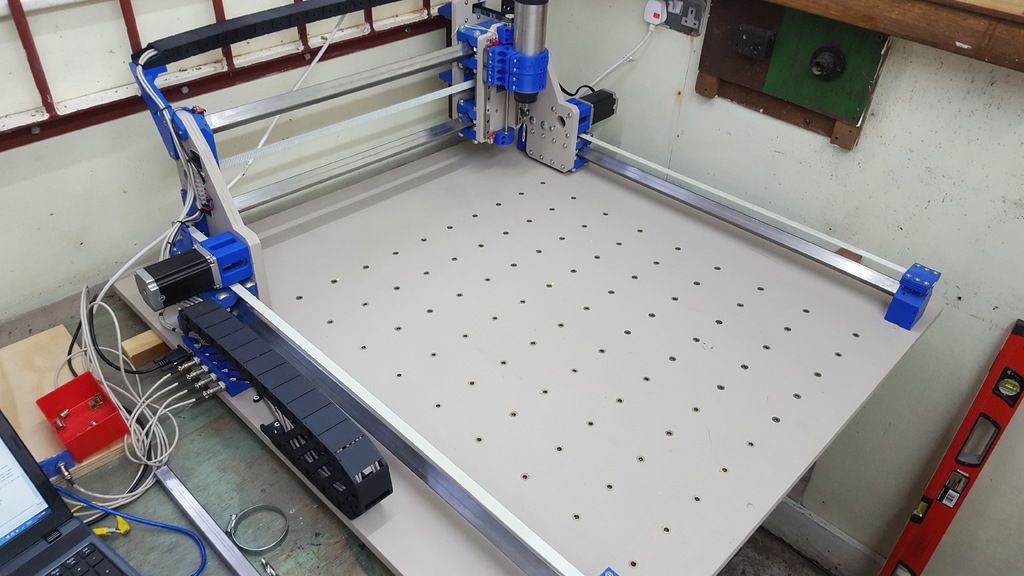 These differ significantly depending on both material and type of printer, but it’s enough of an issue to warrant attention. One deals with particulates with something like a HEPA filter, but VOCs require a carbon filter. This is where the Nevermore comes in. Active carbon filters will wear out simply from exposure to the air, so if one is serious about cleaning VOCs when printing, it is definitely worth looking into bulk carbon with a design like the Nevermore.
These differ significantly depending on both material and type of printer, but it’s enough of an issue to warrant attention. One deals with particulates with something like a HEPA filter, but VOCs require a carbon filter. This is where the Nevermore comes in. Active carbon filters will wear out simply from exposure to the air, so if one is serious about cleaning VOCs when printing, it is definitely worth looking into bulk carbon with a design like the Nevermore.
Safe 3D printing without nanoparticls & VOCs
Toxic emissions
Nanoparticles & VOCs
Studies have shown high nanoparticle emissions from 10 to 100nm and significant production of VOCs from the filaments fusion. You might breathe harmful air in the presence of 3D printer, and in a repetitive way. That is chronic pollution with a long-term effect on your health which you can prevent with safety features.
Filtering system
“Filter designed for 3D printing”
Filter
HEPA & Activated carbon
The P3D range filter received special attention to strictly follow the requirements of air filtering for nanoparticles under 100 nm and provide 98% efficiency. In order to neutralize odors and symptoms of irritation a specific activated carbon was selected.
AlveoONE & R
Air filtering system mountable on an enclosure
starting from 79,99€, in kit or assembled
Filtering system
PrinterCase
Air filtering system mountable on an enclosure
696,00€ incl. VAT – in stock
VAT – in stock
Add to cart
Custom-sized enclosure
Customised enclosures for desktop 3D printer
Industrial quality and volume to 1 m3
Online quotation
Melting plastic: a good idea without any protection?
3D printer enclosure is necessary to achieve beautiful prints without the warping effect. An enclosure can stabilize temperature and protect the printing zone from draughts. However, inside the enclosure, the harmful emission will be concentrated during the printing and requires air extraction or constant filtering.
– 3D printer manufacturers –
Your clients ask us to protect their operators and machines with enclosures and efficient filters. Incorporate an Alveo3D directly on your 3D printer to get a reputed and efficient air filtering system.
– All industrial field –
With the flexibility of additive manufacturing, we are able to design custom air filters. We can adjust filter specifications to catch targeted pollutants and keep the required airflow.
We can adjust filter specifications to catch targeted pollutants and keep the required airflow.
Chemical risk expert
INRS recommendations
French National Research and Safety Institue : Risks for your health and Prevention solutions
Custom solutions
Efficient filtration
French and made in Alps
Available in European countries
04 56 29 43 90 [email protected]
Tsar3D company blog | Page 4 of 5
Posted on
One of the most efficient applications of a 3D printer is the production of mesh filters. Also, these products include various calibration and sorting meshes with cells, a sieve, in the designs of various separators.
Also, these products include various calibration and sorting meshes with cells, a sieve, in the designs of various separators.
The advantages of 3D printed filters include:
- Obtaining a filter with an arbitrary cell size
- Ability to print fasteners (for example, threads) directly on the filter
- Ability to create the desired mesh structure inside the volumetric filter
- Minimum production time, no need for other equipment and manual labor
- Low cost allows you to create disposable filters
Printing housings for existing filters is the same highly efficient enterprise that simplifies the interfacing of various housings, structures and pipelines, which ultimately eliminates the costly manufacture of parts by milling, welding or purchasing expensive components.
The photo shows a sample of the internal filling of products.
Published by
German 3D printer makers Kühling&Kühling recently tested a part made from ABS plastic made to the dimensions of a chain link. The essence of the test was to hang a load weighing 800 kg through this link, with which the datal coped without any damage. It will probably support even more of that weight.
The essence of the test was to hang a load weighing 800 kg through this link, with which the datal coped without any damage. It will probably support even more of that weight.
This shows how durable the parts after 3D printing are, which allows them to be used in work and in industry as functional ones.
Published
Today we will talk about how 3D printing can be used on a specific example - the production of metal parts by casting using 3D printed models.
The metal that we will use for products - IChKh12GZM - cast iron.
Briefly about the technology, which is called "casting into cold-hardening mixtures (CTS)". This technology is similar to the traditional one (metal casting in sand-clay molds), only artificial resins are used as a binder for sand mixtures. Purge of core boxes with various tertiary amines is used to cure resins.
Purge of core boxes with various tertiary amines is used to cure resins.
Casting technology in XTS allows to ensure high quality of the casting surface, absence of gas defects and blockages in the casting from sand.
And go to the model area.
Models are placed on the slab and sprinkled with graphite so that the sand mixture does not stick. Model plate with models:
The flask (metal box) is installed:
Pour in our mixture, lightly tamp.
Turn over and remove the under-model plate.
This is what we see after the coup. Sprinkle with graphite.
The second flask and sprue are installed, metal will be poured through it.
Fill the flask with our mixture.
Level and lightly tamp down.
Along the way, we make rods from the same sand mixture. We use a two-part printed form for this.
They are needed in order to create holes in the future product. We will insert them into the mold before pouring.
In the meantime, 5-10 minutes have passed and we separate our 2 flasks and take out the models. Then a non-stick coating is applied to the inner surface.
So we got 2 flasks. Then the rods are inserted into these holes, the two halves are connected again and the metal is poured through the sprue.
The mold itself, after pouring the metal, is destroyed by temperature, but there is enough time for the metal to take shape. After that, the received models are freed from sand and it goes back to work.
This is what the product looks like after casting and rough processing:
As you can see, the casting process is simple. Receiving models with a 3D printer saves a lot of money and time, which leads to increased profits and increased opportunities for the foundry.
Our large 3D printer solves the problem of creating models without the use of skilled manual labor and expensive milling equipment.
Thanks to our colleague Anatoly for the photo and description of the process.
Posted
On July 18 and 19, 2015, the VKontakte Festival was held in St. Petersburg.
This large-scale action captured the vast territory of the 300th Anniversary Park, located near the Gulf of Finland.
Visitors had an incredibly large number of active entertainment (more than 300), 2 huge stages, where a large number of famous artists performed.
We do not know the number of visitors, but there were at least 40 thousand people, there were several thousand participants and organizers alone.
The Tsar 3D project is located in the Innovation zone, next to virtual reality glasses, a virtual reality chair and a retailer of desktop 3D printers.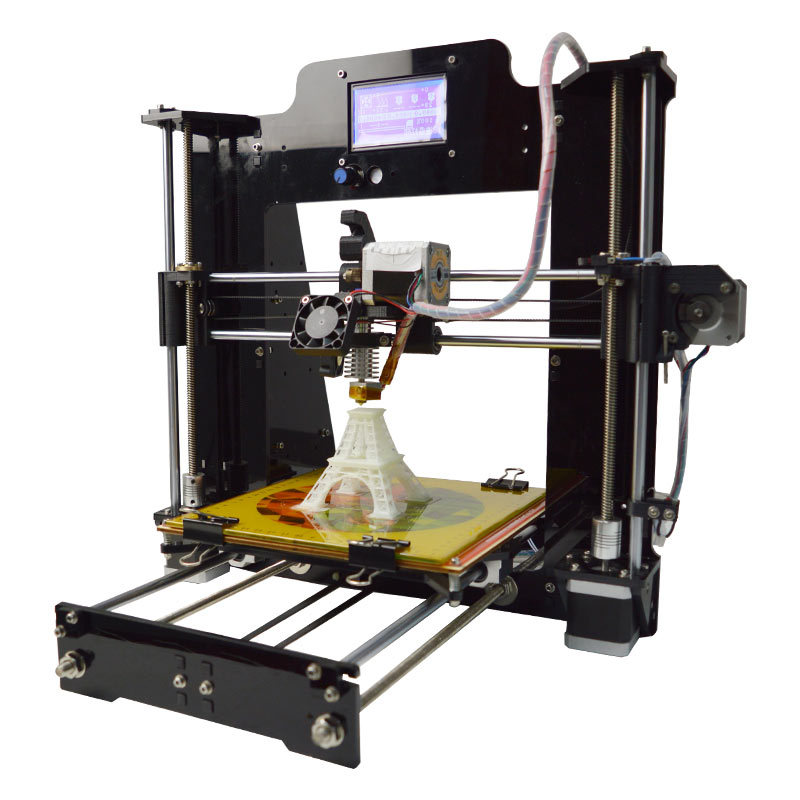
We were with the Axiomlab project. Unusual lamps printed on Tsar 3D equipment and specifically on the Tsar printer were presented.
In a simplified way, you can feel the emotions of the festival in this video:
Link to the meeting of the Vkontakte event: https://vk.com/fest
Published
, only a few have an idea about 2-3 printing technologies, and a very small percentage of people who are aware of the possibilities, nuances and efficiency of 3D printing. Therefore, we will continue to educate interested people, now in the format of blog posts.
If you approach the question fundamentally, then first you should find out what types of 3D printing are, what are their pros and cons, what is the price, etc., but most people are looking for specific numbers - the necessary investments, payback , costs, profits. We will give the numbers in the following articles, but for starters, I will discuss how you can generally make money on 3D printing.
We will give the numbers in the following articles, but for starters, I will discuss how you can generally make money on 3D printing.
First of all, I would like to note that 3D printing does not allow you to get finished products. The main application of 3D printing is the production of product prototypes. The vast majority of products nowadays are designed in a 3D environment, so before starting production, any manufacturing company has to get the first test products in physical form. But mass production is designed in such a way that single products will cost the company as much as several thousand products, so 3D printing comes to the rescue - for all its high cost, it turns out to be cheaper.
The second place in the applicability of 3D printing is the production of master models, that is, molds that are later used to obtain molds for, for example, cold casting of plastic or polyurethane. In jewelry, these are wax products, later burned out in a mold where the metal is poured.
Thus, the main income from 3D printing is to provide printing services - their range and quality depend on the amount of equipment you purchased. The competition in this market is not very strong, but high prices make the technology available only to large customers, because. the most expensive industrial 3D printers are quite expensive and there are only a few of them in the country.
The best option is to create a business that uses 3D printing as a competitive advantage. That is, to use the main benefit of 3D printing - the creation of a complex shape without the participation of a highly qualified person and sophisticated equipment. As an example - casting souvenir soap or candles - a model is printed on a 3D printer, from which a silicone mold is removed, into which wax or soap is then poured. This form will be reusable and will allow you to receive hundreds of products. The main advantage is to quickly get a form made by any hired person anywhere in the world, or even downloaded for free.
Our printer allows you to get large products without the use of complex manual labor and expensive equipment that requires a professional operator. Today, such devices are not available in Russia, so you have the advantage of starting a niche business right now.
As an example, a sculpture and a sink cast from concrete in a silicone mold.
We will write in more detail about working with the help of casting, the necessary conditions and means in the following articles.
Published
St. Petersburg hosted Geek Picnic, the largest popular science festival dedicated to modern technology, science and creativity.
We have been participating in this event for the 4th year in a row and have seen how it has grown from a small idea to gather outdoors into a giant festival. It has become a really exciting positive event where everyone can try a lot of entertainment and learn a lot of new things.
The festival occupies for 2 days the vast territory of the park on Elagin Island and is divided into several zones - science, art, technology. Interesting educational lectures are continuously held in several tents, and various activities for visitors and master classes are scattered everywhere. There is also a lot of food and just green lawns and sun.
We, the Tsar 3D company, brought a pre-production Tsar 3D printer and printed large letters of the name of the event. At the time of the event, this is the largest available FDM 3D printer in Russia and Europe. The printer has stood up to work in extreme conditions in the open air perfectly. Thanks to all the guests for interesting questions and photos.
Link to the event: https://vk.com/geekpicnic
comparison of the largest 3D printer and the usual ultimaker 2
shared with the world the secrets of post-processing products created on their large 3D printer.
The company published the post-processing process and examples in its new video:
Posted
A few years ago, when mentioning 3D printers, jokes about printing a car or a bumper were popular. But now it's reality!
The Oak Ridge National Laboratory (USA) was able to print an exact copy of the rare Shelby Cobra sports car. Representatives of the laboratory demonstrated their creation in Detroit at the International Auto Show 2015. The entire process of creating a car (from concept development to production) took only six weeks. This copy clearly showed the advantages and prospects of creating prototypes with the help of 3D printing.
The body parts were directly 3D printed and then standard alignment and paint work followed.
The machine is completely identical to the original Shelby Cobra. The car weighs 635 kg, and only a digital display mounted on the dashboard gives its “modernity”. And of course, more than 200 kg of parts produced from start to finish using 3D printing technology. Carbon fiber was used as a material for decorative elements, passenger compartment, frame and body elements.
And of course, more than 200 kg of parts produced from start to finish using 3D printing technology. Carbon fiber was used as a material for decorative elements, passenger compartment, frame and body elements.
Focusing on the success of our American colleagues, in the near future we will begin testing parts printed on the Tsar Printer, which in the future will allow us to design and print vehicles. But we will write about this later.
Published
Are you interested in printing with cement? Our company is exploring the market for 3D printing with building mixtures and ceramics in Russia.
We have experience in several types of pumps for viscous mixtures, pastes and solutions that can be used for such 3D printing. This will make 3D concrete printing available in the Russian Federation.
What is it for? To create small architectural forms and interior elements, buildings and unique design solutions.
Contact us and we will solve your problem.
A very interesting video of printing with cement from the American Andrey Rudenko:
.
In the first week of 2015, we finally managed to do the first tests of the new extruder on the printer.
The result is a cylindrical piece with an outer diameter of 60 mm. Weight 40 grams. It turned out to be a very durable product that cannot be broken by anything, even with a hammer!
We don't publish the parameters of the extruder yet, but this part is printed with a nozzle with a diameter of 5 mm from ABS plastic.
In the near future we will start printing designer furniture, bumpers for cars and whole cars. Follow the news.
Follow the news.
Air pollution in 3D printing
Main page
Articles
Smoke from a 3D printer
Smoke from a 3D printer
Introduction How does the printer pollute the air How does BOFA filter
What is 3D printing
3D printing is also known as additive manufacturing. This means that the product is created by adding material in layers. The process is controlled by a coordinate XYZ robot with digital control. Printers work with plastic or metal. The material is fed to the deposition point in the form of wire or powder. The printer is melting the material. Then it connects to the previously applied base.
A 3D printer will produce objects of complex shape. This favorably distinguishes the additive process from the subtractive one, when excess is removed from a large piece of material. Machining, laser processing, soldering or welding generate more contamination. And a lot of material is wasted. 3D printing does not consume a lot of extra material. It appears to be a clean process, but it still pollutes the air.
And a lot of material is wasted. 3D printing does not consume a lot of extra material. It appears to be a clean process, but it still pollutes the air.
Anyone using 3D printing needs to be aware of the health risks. The 3D printer seems safe. But it can generate toxic fumes and hazardous substance particles. Technological processes that transform the material pollute the air in the workplace. This applies to cutting, engraving, thermal decomposition in a laser machine, soldering with a toxic flux, etc. Molten metals and polymers are no exception.
Why is a 3D printer dangerous?
Ultrafine particles
Heating a substance causes the release of solid particles, droplets and vapors. They may be harmful if inhaled.
European scientists are gradually revealing the dangers of 3D printing to health. According to the 3D Printer Emission Report , plastic melting releases small nanoparticles of material into the air.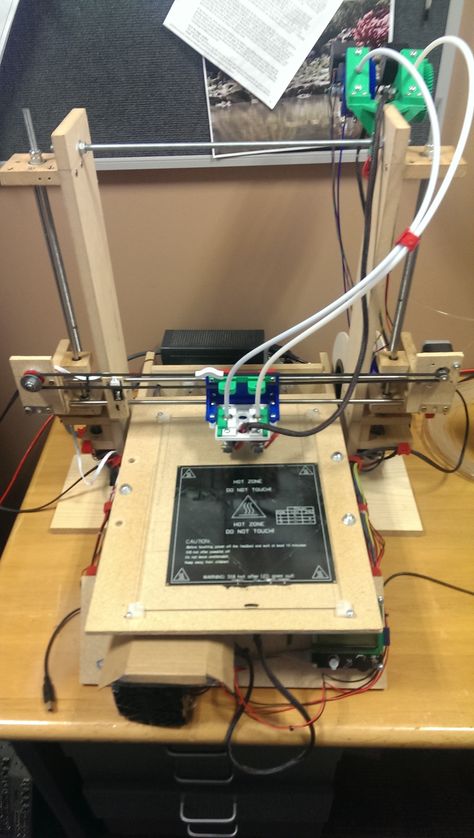 They cannot be seen without special equipment. But that doesn't mean they are safe.
They cannot be seen without special equipment. But that doesn't mean they are safe.
PLA plastic nanoparticles are used in pharmaceuticals as a means of delivering drugs to various organs, including the brain. Cosmetics use the same effect. Ultrafine particles penetrate the skin. By themselves, PLA particles are not toxic. But no one knows about the consequences of accumulation in human organs. Nanoparticles condense into relatively large formations. It is known for certain about the harmfulness of soot nanoparticles from automobile exhausts . They are associated with degenerative brain diseases, such as Alzheimer's disease.
ABS plastic is toxic when melted. Nanoscopic ABS particles are just as toxic. These particles are very small. During inhalation, they enter the brain through the olfactory nerve. They spread throughout the body through the bloodstream. Most organs can get rid of them naturally, but the brain and lungs become clogged for a long time.
In fact, particles as small as 10-200nm easily enter the bloodstream through the lungs. Their toxic action differs from the original substance in the usual shapes and sizes. According to study by the Italian Institute of Health and Consumer Protection nanoparticles are deposited in the lungs in greater quantities than e-cigarette smoke.
Their toxic action differs from the original substance in the usual shapes and sizes. According to study by the Italian Institute of Health and Consumer Protection nanoparticles are deposited in the lungs in greater quantities than e-cigarette smoke.
Gases or vapors
Molten ABS gives off a particularly unpleasant odor. Other plastics including nylon, HIPS and HDPE emit the same toxic fumes but have less odor.
Polymer materials can vaporize some of their constituents. Dioctyl phthalate is often added to them for flexibility and mold resistance. During high heat or laser treatment, benzene is released in hazardous quantities. And while working with PVC, HCl aerosol condenses in the air.
The high temperature in the area of the printer head causes the air to expand. Vapors quickly spread in the work area along with plastic particles. Thermal degradation products of polymers are shown in the diagram below.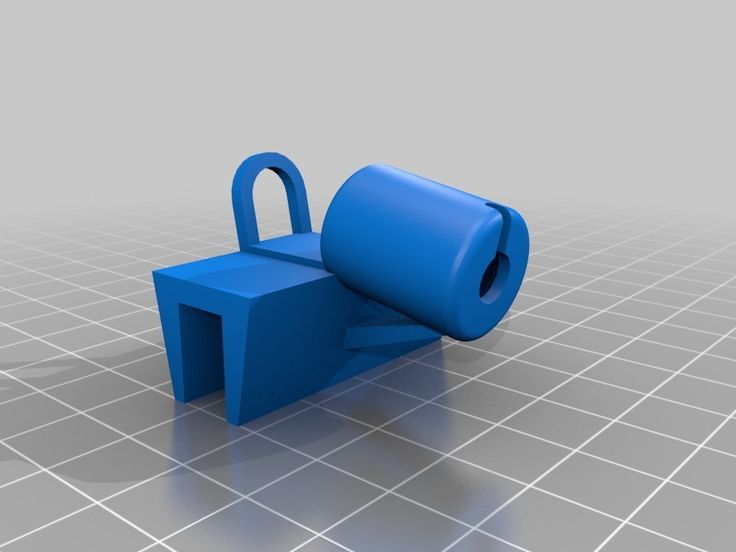
How does BOFA work?
A smoke extractor is an extractor hood with filters placed in one device. She got her name at the time when she removed the smoke of a soldering iron or a laser engraver. But these same devices with special filters are also suitable for a three-dimensional printer. The smoke extractor block for the printer is not much different from the soldering block.
3D printing is sensitive to changes in air temperature. Therefore, he is afraid of drafts. If you are using a small open printer, then the polluted air can be removed with a conventional smoke extractor. In order not to disturb the climate in the printer, select the minimum air suction speed.
If your 3D printer model is closed, there is a protective cover, then you can install a cleaning curtain. During operation, while the printer window is closed, it can be turned off. But it will clean the outgoing air when you open the box to take out the finished product.
If your printer is large and completely enclosed, then it will most likely have built-in pipes for connecting the hood. They can be connected to a smoke extractor with large filters. It can operate continuously or turn on at the command of the printer. The fume extractor captures dirty air and returns it back to the printer so as not to change the air temperature during the printing process.
3-stage filtration
A complete smoke extractor is equipped with three filters. The first is the pre-filter. It does not let in coarse dust, so as not to clog the main fine filter with it. The fine filter is HEPA. Particles of all sizes, including aerosols and nanoparticles, settle on its fibers. The gas filter completes the cleaning. It consists of densely packed activated carbon granules with interlayers of fiberglass. Activated carbon traps VOCs and nanoparticles that HEPA missed.
Smoke extractor against exhaust
The cheapest way to remove smoke is a duct fan and air ducts. Emission of polluted air through the window is prohibited by SanPin norms. And the smoke extractor has advantages.
Emission of polluted air through the window is prohibited by SanPin norms. And the smoke extractor has advantages.
- Good air purification from all kinds of solid particles and aerosols
- There will be no odors from melted plastic or metal in the room
- You will be sure that your health will not suffer
- The microclimate in the 3D printing machine will be stable
- Supply ventilation with heating or air conditioning is not needed, as for the extract through the window
Eliminate the harmful agent
The hood with filters will solve the problems with harmful emissions from 3D printing with polymers and metal powder. Without proper filtration, ultrafine particles cause skin and eye irritation. Nanoparticles accumulate in internal organs and lead to systemic disorders, heart and vascular diseases, and Alzheimer's disease. The smoke extractor is suitable for household and professional models of printers. Extractor hood with filter, recirculation and airflow adjustment minimally affects the air temperature inside the printer.


